Don't miss any stories → Follow Tennis View
FollowATP Tournament of the Year: Roland Garros
Wimbledon may be the most revered major, the US Open the most glamorous, and the Australian Open the most inviting. But Roland Garros recently has been the most dramatic major, defined by dizzyingly high stakes, unexpected plot twists, and epic duels in the game’s greatest rivalries. The 2013 fortnight in Paris proved no exception. Seven key narratives interwove there, some of which resonated far beyond the tournament.
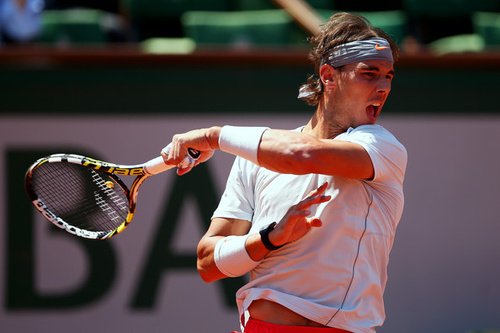
1) The renaissance of Rafael Nadal
The Spaniard’s comeback had ignited two months earlier when he claimed the Masters 1000 title at Indian Wells, defeating three top-eight opponents en route. All the same, Nadal could not have cemented his return to the top without winning a major. It may seem a foregone conclusion in retrospect, but it did not at the time. Nadal had lost to archrival Novak Djokovic at Monte Carlo, ending a spectacular run there, and he had looked more vulnerable than ever before during the first week in Paris. An epic five-set semifinal against Djokovic tested his confidence in the comeback, forcing him to master adversity and shrug off squandered opportunities of his own. By defeating the world No. 1, his main nemesis in recent years, Nadal silenced any doubts lingering from his seven-month absence. That triumph, which led to his record-extending eighth Roland Garros title, handed him the momentum in his rivalry with Djokovic and set the tone for his dominance in the rest of 2013. If he had not rallied in their spine-tingling fifth set, Nadal likely would not have claimed the US Open title or finished the season at world No. 1. This achievement also set him back on track to charge toward Roger Federer’s record of 17 major titles and the “greatest of all time” label that accompanies it.
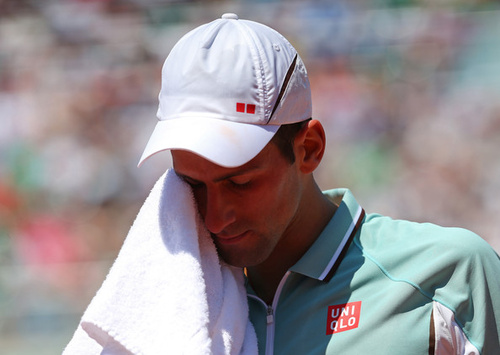
2) The enigma of Novak Djokovic
It was a year of almosts for Australian Open champion Djokovic, who finished runner-up at two other majors and nearly defeated the eventual champion in a five-set semifinal at the third. A symbol of this trend emerged from Djokovic’s latest attempt to conquer Rafa on the red dirt where he rules. He came much closer than ever before to achieving this feat, extending Nadal to a final set in Paris for the first time and eventually edging within six points of victory. Had Djokovic won their semifinal, he would have been heavily favored to complete a career Grand Slam, move halfway to a calendar Grand Slam, and…who knows? Often an emotional enigma, the Serb showed how fiercely he competes with his back to the wall by snatching victory from the jaws of defeat in the fourth set after Nadal had held the upper hand. Then, he showed puzzling symptoms of frailty by snatching defeat from the jaws of victory and yielding a cascade of errors in the final game. Any competitor would have felt deflated by that setback, and it appeared to gnaw at Djokovic in marquee matches that he played later in the year, contributing to his loss of the No. 1 ranking. Not until the post-US Open fall season did he fully bounce back.
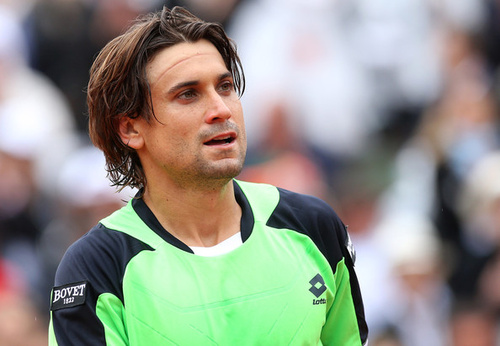
3) The breakthrough of David Ferrer
The patient, indefatigable Ferrer once referred to himself as the least talented man in the top 100. That moment of self-deprecation clearly sold himself far short, for players do not spend year after year in the top 10 of a formidable Tour by accident. But it was equally clear as of mid-2012 that Ferrer’s resume did not remotely compare to those of the champions surrounding him. He may look back on Paris as the City of Light at the End of the Tunnel. Capturing his first Masters 1000 shield at the indoor tournament there last fall, Ferrer reached his first major final at Roland Garros this spring. For a 31-year-old who has logged countless miles on the circuit, both achievements felt more like capstones of a career than cornerstones on which he will build something greater. That recognition should not dull our ability to appreciate Ferrer’s late-career breakthrough. Seldom does a member of the ATP supporting cast who toils so long in the shadows ever burst into the brightest of spotlights. Ferrer became the first man outside the Big Four of Nadal, Djokovic, Roger Federer, and Andy Murray to reach a major final since Wimbledon 2010.
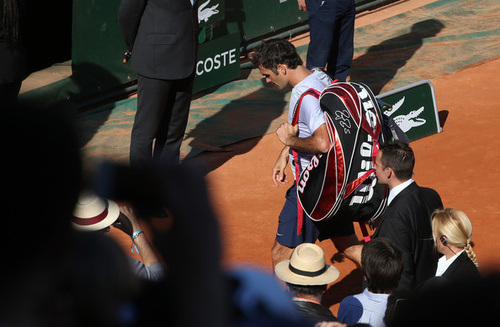
4) The frustration of Roger Federer
Despite ominous signs of a back injury, Federer’s season had been satisfactory albeit not spectacular heading into Paris. He had lost a five-set semifinal to Murray at the Australian Open, not a startling result and an evening in which he had displayed flashes of his vintage self. Federer also had rebounded from a slow start to the clay season by reaching a Masters 1000 final in Rome, where another clay loss to Nadal surprised nobody. He had landed in the opposite side of the Roland Garros draw from both Djokovic and Nadal, so a finals appearance seemed plausible. Jo-Wilfried Tsonga, whom Federer had defeated at the Australian Open, thought otherwise. The Frenchman’s quarterfinal victory over the Swiss champion followed a grueling five-setter that Federer had contested against Gilles Simon. This theme of struggling to recover from long matches would persist throughout his season, undermining him against elite rivals. The straight-sets debacle foreshadowed setbacks against less notable opponents at the remaining two majors of the season, Wimbledon and the US Open. The faster surfaces at those tournaments should have favored Federer, but the Paris loss foreshadowed a summer swoon that ranked among the year’s more surprising stories.
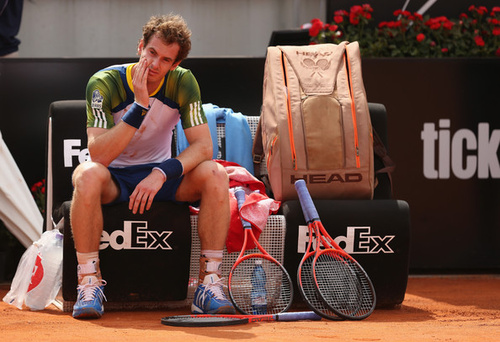
5) The absence of Andy Murray
Never a genuine contender for the Roland Garros title, Murray became the only star on either Tour to withdraw from this year’s event. He recognized his greater opportunity to win Wimbledon, an infinitely more significant tournament for him, and chose to place all of his eggs in the grass basket. This calculated risk reaped the best possible reward. Had Murray played in Paris despite his back injury, he might have arrived on the grass depleted in energy and oppressed by concern about his fitness. At the same time, his withdrawal from the season’s second major presaged his late-season absence from the game to undergo back surgery. Those who were surprised by that decision might have reflected back to the events of the spring and realized that the injury would prove more serious than initially thought.
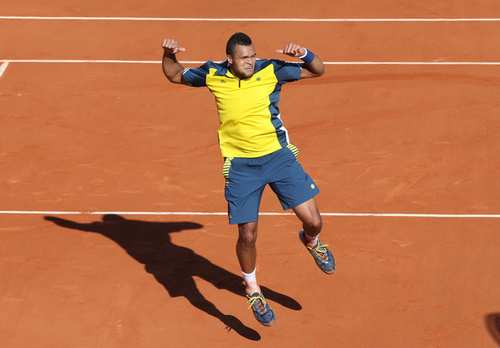
6) The valor of home heroes
The surface at Roland Garros does not suit the shot-making panache of most Frenchmen, yet several etched their imprints onto the terre battue. Most notable of them was Tsonga, who reached the semifinals there for the first time by atoning for a painful loss to Djokovic in last year’s quarterfinal. But the Paris crowd found plenty of other reasons to cheer, including a first-round comeback by Gael Monfils against top-10 opponent Tomas Berdych. Not known for competitive resilience, this Gallic showman relied on an energized crowd to rally from losing the first two sets. Few matches in the tournament ranked higher than that upset for drama and overall quality, one of them coming in a five-set battle between Richard Gasquet and Stanislas Wawrinka. While the home hero did not prevail that time, the match owed no more of its entertainment to the sparkling one-handed backhands on display than to the theater of a crowd vigorously exhorting one of their own. Superstars set the tone late in the fortnights of majors, but these battles in earlier rounds cling to the memory almost as long.
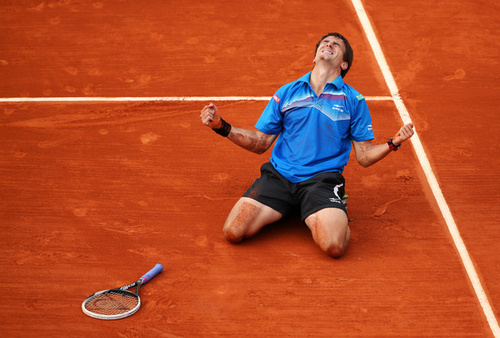
7) The resilience of veterans
Among the ATP’s more compelling narratives in 2013 (and 2012) was the success enjoyed by veterans thought long past their prime. Two of those evergreen competitors, a 35-year-old German and a 31-year-old Spaniard, asserted themselves at Roland Garros. On his least favored surface, former world No. 2 Tommy Haas rose to the challenge of winning best-of-five matches on consecutive days en route to the quarterfinals. His stamina even allowed him to outlast the most famous Marathon Man in tennis, John Isner, in an 18-game fifth set. Across the fourth and fifth sets, a record-breaking 12 match points eluded Haas, yet he checked his emotions better than he would have a decade before and converted his 13th chance. A clay specialist who once had ranked in the top 10, Tommy Robredo announced his revival by plowing into the quarterfinals with three consecutive comebacks from losing the first two sets. Also a record, that display of stubborn resolve laid the foundation for another quarterfinal appearance at the US Open, where Robredo upset Roger Federer.










